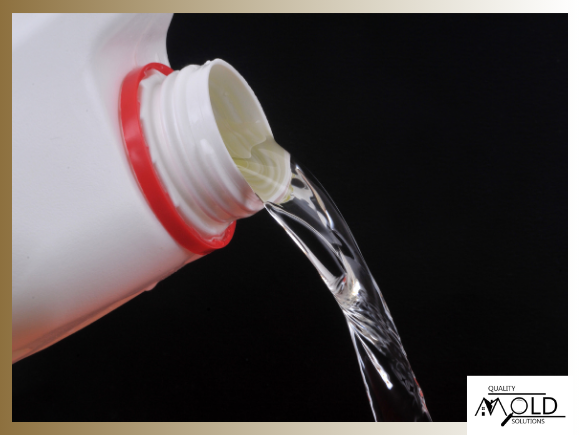Mold is one of those household issues that’s often misunderstood, leading to myths and misconceptions that can put your property and health at risk. At Quality Mold Solutions, we believe that knowledge is power, which is why we’re here to set the record straight. In this blog, we’ll debunk common mold myths, explain how a mold testing company can identify the type of mold present, guide you on effective removal strategies, and share tips for preventing mold from coming back.
Myth 1: Mold Only Grows in Dirty Homes
One of the most pervasive myths about mold is that it only thrives in dirty or neglected spaces. The truth is that mold can grow anywhere there is moisture, organic material, and the right conditions. Even the cleanest homes can develop mold problems if there’s a leak, high humidity, or poor ventilation. Mold doesn’t discriminate based on how spotless your home is; it simply needs moisture to thrive.
Myth 2: All Mold Is Dangerous
While some molds, such as black mold (Stachybotrys chartarum), have earned a reputation for being harmful, not all molds pose serious health risks. Some types of mold are relatively harmless, though they can still trigger allergies or respiratory irritation in sensitive individuals. The key is knowing which type of mold you’re dealing with—and that’s where professional mold testing comes in.
How Mold Testing Identifies the Type of Mold
Mold testing is essential for understanding the scope and nature of your mold problem. A certified mold testing company like Quality Mold Solutions uses advanced techniques to:
- Collect Samples: We take air and surface samples to detect mold spores and colonies.
- Identify Mold Types: Laboratory analysis determines the specific type of mold present, whether it’s allergenic, pathogenic, or toxic.
- Assess Mold Levels: Testing reveals the concentration of mold in your environment, helping gauge the severity of the problem.
Armed with this information, we can guide you on the best course of action for remediation and prevention.
Myth 3: You Can Remove Mold with Bleach Alone
 A common DIY myth is that bleach is a cure-all for mold problems. While bleach might kill surface mold, it doesn’t penetrate porous materials like wood, drywall, or insulation. If moisture remains, the mold is likely to return. Worse, relying solely on bleach can give you a false sense of security while the mold continues to grow beneath the surface.
A common DIY myth is that bleach is a cure-all for mold problems. While bleach might kill surface mold, it doesn’t penetrate porous materials like wood, drywall, or insulation. If moisture remains, the mold is likely to return. Worse, relying solely on bleach can give you a false sense of security while the mold continues to grow beneath the surface.
How to Effectively Remove Mold
Removing mold requires a thorough and strategic approach:
- Address the Source of Moisture: Mold will return unless you eliminate the underlying cause, whether it’s a leak, high humidity, or condensation.
- Professional Remediation: Certified mold remediation companies use specialized equipment and techniques to safely remove mold, especially in severe cases.
- Post-Remediation Testing: After remediation, independent mold testing ensures the job was done thoroughly and that your property is safe.
Myth 4: Mold Is Only a Problem in Older Buildings
Many people assume that mold is a problem exclusive to old or poorly maintained buildings. However, even brand-new properties can develop mold issues if construction materials become wet during building or if there are HVAC or plumbing problems. Mold doesn’t play favorites—it can affect any property where moisture and organic materials are present.
Ways to Prevent Mold from Recurring
The best way to deal with mold is to stop it before it starts. Here are some prevention tips:
- Control Humidity: Keep indoor humidity levels below 60%, ideally between 30-50%. Use dehumidifiers and air conditioners if necessary.
- Fix Leaks Promptly: Repair roof, plumbing, and foundation leaks as soon as they’re detected.
- Improve Ventilation: Ensure proper airflow in bathrooms, kitchens, and laundry rooms by using exhaust fans and opening windows when possible.
- Regular Maintenance: Clean and inspect gutters, HVAC systems, and other areas where moisture can accumulate.
- Monitor Problem Areas: Keep an eye on basements, attics, and crawl spaces, as these are common areas for mold growth.
Myth 5: Mold Testing Is Unnecessary
Some believe that mold testing is a waste of time and money, especially if mold is visible. However, mold testing provides crucial insights that visual inspections alone cannot. Testing identifies hidden mold, assesses air quality, and ensures that remediation efforts have been effective. Skipping this step can lead to recurring mold problems and unnecessary stress.
The Role of a Mold Testing Company
When you partner with a mold testing company, you’re not just solving a problem—you’re investing in peace of mind. At Quality Mold Solutions, we’re committed to:
- Educating Homeowners: We provide detailed reports and actionable advice tailored to your situation.
- Ensuring Safety: Our independent testing ensures that your property is mold-free after remediation.
- Preventing Future Issues: By identifying the causes of mold and offering prevention tips, we help you avoid costly problems down the line.


